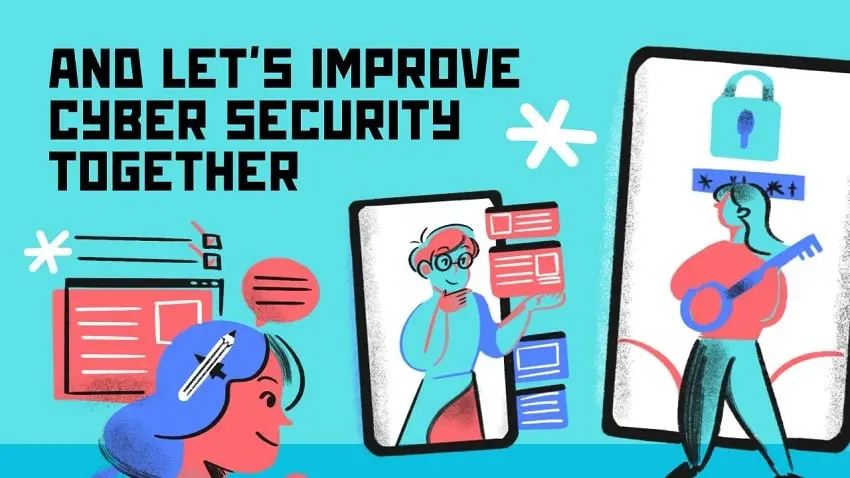
Table of Contents
In an age where cyber threats are increasingly sophisticated and pervasive, cybersecurity has never been more critical. For small business owners, remote workers, and IT professionals, understanding the importance of robust cybersecurity measures can make the difference between smooth operations and devastating data breaches. This guide will provide you with essential tips and insights to safeguard your digital assets and ensure a secure working environment.
Cybersecurity Matters More Than Ever
The digital era has brought about unprecedented opportunities for businesses and individuals alike. However, it has also introduced a myriad of cyber threats. For small businesses and remote workers, the stakes are particularly high. Unlike large corporations, small businesses often lack the resources to recover from a cyber attack easily. For remote workers, the challenge is maintaining secure connections outside the controlled office environment.
Cyber attacks can lead to significant financial losses, reputational damage, and even legal consequences. According to a report by Cybersecurity Ventures, cybercrime is expected to cost the world $10.5 trillion annually by 2025. This staggering figure underscores the urgent need for proactive cybersecurity measures.
In this blog post, you’ll learn about common cybersecurity threats, practical tips for enhancing cybersecurity, and the crucial role of IT professionals in this endeavor. Let’s get started on securing your digital world.
Identifying Common Cybersecurity Threats
Understanding the types of threats you might face is the first step in protecting your business. Here are some of the most common cybersecurity threats for small businesses:
Phishing Attacks
Phishing attacks involve fraudulent emails or messages designed to trick recipients into revealing sensitive information, such as passwords or credit card numbers. These attacks are becoming increasingly sophisticated, making them difficult to spot.
Ransomware
Ransomware is a type of malicious software that encrypts a victim’s files, with the attacker demanding a ransom to restore access. Small businesses are often targeted because they may be more willing to pay to regain access to their data.
Malware
Malware includes various types of harmful software, such as viruses, worms, and spyware. Once installed on a device, malware can steal information, disrupt operations, or provide unauthorized access to hackers.
By recognizing these threats, you can take steps to protect your business and avoid falling victim to cybercriminals.
Practical Cybersecurity Tips
Now that you’re aware of the common threats, here are some practical tips to help you bolster your cybersecurity.

Secure Your Network and Devices
First and foremost, ensure that all your devices and networks are secure. Use firewalls to block unauthorized access and employ antivirus software to detect and remove malicious programs. Make sure all devices connected to your network are protected, including smartphones and tablets.
Regularly update your firmware and software to fix vulnerabilities. Use encrypted connections, such as Virtual Private Networks (VPNs), to safeguard data transmitted over the internet.
Additionally, limit access to your network to only those who need it. Implementing network segmentation can further protect sensitive information by isolating different parts of your network.
Implement Strong Password Policies and Multi-Factor Authentication
Weak passwords are a significant security risk. Encourage employees to create strong, unique passwords for each of their accounts. A strong password typically includes a mix of letters, numbers, and special characters.
Consider using a password manager to generate and store complex passwords securely. Multi-factor authentication (MFA) adds an extra layer of security by requiring users to verify their identity through a second factor, such as a text message or authentication app.
By combining strong passwords with MFA, you significantly reduce the risk of unauthorized access to your systems.
Educate Employees on Cybersecurity Best Practices
Human error is often the weakest link in cybersecurity. Regular training sessions can help employees recognize potential threats and understand the importance of following security protocols. Topics should include identifying phishing attempts, handling sensitive information, and using secure communication methods.
Create a culture of cybersecurity awareness within your organization. Encourage employees to report suspicious activities and provide clear guidelines on what to do in case of a security incident.
Regularly Update and Patch Software
Software updates often include patches for security vulnerabilities. Ensure that all software, including operating systems and applications, is updated regularly. Enable automatic updates where possible to ensure that you don’t miss critical patches.
Outdated software is a common entry point for cybercriminals. By keeping your software current, you close these vulnerabilities and protect your systems from new threats.
Backup Critical Data and Have a Disaster Recovery Plan
Data loss can occur due to various reasons, including cyber attacks, hardware failures, or natural disasters. Regularly backing up your data ensures that you can recover it in case of an incident.
Store backups in multiple locations, including offsite or cloud-based storage, to protect against physical damage. Develop a disaster recovery plan that outlines the steps to take in the event of data loss or a cyber attack.
A well-documented recovery plan minimizes downtime and helps your business resume normal operations quickly.
The Role of IT Professionals in Cybersecurity

IT professionals play a crucial role in supporting cybersecurity efforts within any organization. Their expertise and vigilance are essential for identifying potential threats and implementing effective security measures.
Continuous Monitoring
IT professionals continuously monitor networks and systems for unusual activities. Using advanced tools and techniques, they can detect and respond to threats in real time, preventing potential breaches before they cause significant damage.
Implementing Security Protocols
From setting up firewalls to configuring secure access controls, IT professionals are responsible for establishing and maintaining security protocols. They ensure that all systems are configured securely and that employees follow best practices.
Regular Audits and Assessments
Regular security audits and assessments help identify vulnerabilities and ensure compliance with industry standards. IT professionals conduct these evaluations to keep the organization’s security posture strong and up-to-date.
Cybersecurity is a Continuous Journey
Cybersecurity is not a one-time effort but an ongoing process. The threats landscape is constantly evolving, and businesses must stay vigilant to protect their digital assets. By implementing the tips outlined in this guide, you can significantly enhance your cybersecurity posture and safeguard your business against potential threats.
Remember, the effort you invest in cybersecurity today can save you from costly and devastating consequences in the future. Stay informed, stay secure, and keep your business thriving in the digital age. So, keep learning and staying up-to-date on the latest security practices to stay ahead of cybercriminals. With a proactive approach towards cybersecurity, you can protect your business from potential threats and ensure its smooth operations for years to come.
Thank you for reading this guide. We hope it has been informative and helpful in strengthening your understanding of cybersecurity. Stay safe! Stay aware, stay secure. Remember, protecting your business is a continuous journey that requires constant attention and effort. By following these tips and best practices, you can significantly reduce the risk of falling victim to cyber attacks and protect your sensitive data from unauthorized access. Let’s work together to create a safer digital landscape for all.



Pingback: The World of Deep Fake Free Websites. - RefixTechnology